Born in Singapore, 1988, Faris Nakamura graduated with Bachelor in Fine Arts (First Class Honours) from LASALLE College of the Arts in partnership with Goldsmiths, College of London in 2014. Through sculptures, installations and site-specific works, Faris investigates the way people navigate and orientate themselves as they encounter space. He desires to understand their attachments and detachments towards space, how these develop, and their impact. Faris was most recently awarded the Young Talent Programme Winners’ Solo (2017/2018). He was the Grand Winner at the Shitsurai International Art Competition, Kobe Biennale (2015) and the Winston Oh Travel Award recipient (2013).
It has been a busy few months for the artist. In between exhibiting a solo showcase at Richard Koh Fine Art, working on the Singapore Biennale, it was recently announced that Faris was one of five finalists for the 2020 IMPART Artist Awards. We met with the artist in his studio, a space he shares with another fellow artist. Tools, paint and materials are strewn on tables and on the floor as we talk to the artist about the artworks that have had a profound influence on him over the years.
It has been a busy few months for the artist. In between exhibiting a solo showcase at Richard Koh Fine Art, working on the Singapore Biennale, it was recently announced that Faris was one of five finalists for the 2020 IMPART Artist Awards. We met with the artist in his studio, a space he shares with another fellow artist. Tools, paint and materials are strewn on tables and on the floor as we talk to the artist about the artworks that have had a profound influence on him over the years.

There is a very clear minimalist sensibility or visual language that ties many of the works you’ve selected together. Is there something in particular about this way of thinking and making that you find compelling?
For me, I think it's just an aesthetic that I personally like. I also don't like being bombarded by too many visuals. I think the world around us is too cluttered, and we are always easily distracted by the things around us. I enjoy minimalist works, and how minimalist artists work towards almost eliminating all distractions. Within a single work, they touch on just one aspect or at most a few aspects. When you do that, that single idea can mean so much.

¹ White Flight Overnight, Black Flight Overday, Leandro Erlich
2015

² Sculpting with Air, Jong Oh
2018
Something that many find enjoyable about minimalist artworks is how this pared down or condensed visual language almost leaves more to the imagination. On that note, let’s talk about perspective for a bit. With some of the works you picked out, especially with White Flight Overnight, Black Flight Overday and Sculpting with Air, the viewer is almost invited to reposition on reimagine their perspectives. This is something you've been exploring yourself, and it was evident in your recent solo showcase with Richard Koh Fine Art. When you begin composing a work, how important is this notion of perspective and enticing viewers’ imaginations?
I think it's really important, especially to the process of making. Because my visuals are very light to the eye, they often remain open to the interpretation of the viewer. Having said that, there is a specific format that I always stick to when making works. By sticking to that format, I believe that people are still somewhat able to get the idea of what I’m trying to say. That's why the notion of perspective, whatever it may be, is really important. Regardless of the sort of visuals I do, viewers are able to understand that my works are about, for example, parts that are hidden and parts that are concealed.
Another thing is that viewers often find that they have to come down to the gallery or exhibition space to see the works for themselves, and this is because the photographs can’t convey the full picture.
There are times where I wish I could work the same way a painter does. As a painter, the final outcome doesn’t have to be set in stone when you start painting. There is that degree of being able to just be spontaneous with the process.
For my practice, I’d need to have an idea of how the final work should look like.
Minor changes or tweaks do happen from time to time, but I would always have to know how the final work will look like. What I do is that I draw the entire work out, before turning it into a three-dimensional form.
Do you use programmes such as SketchUp for these drawings?
I’m not very good with technology. Even when I need to use technology, I use programmes such as Paint. Can you imagine that?
When you’re talking about this format that you derive all your works from, how would you describe this format?
I’ve never really thought about that, and prior to this interview, I’ve never used the word “format” as well.After four years of working on these themes, and knowing how I want my artworks to appear, the “format” is to make works that compel viewers to coming down physically to see the works for themselves. In that sense, there is no specific format. It is about how I construct works that look very minimal, but contain all of these hidden parts. I’m sure I’ll find better ways of conveying this format as I go along, and here I’m using the word “format” loosely as well, but the main idea is to always keep a certain part of the work hidden.
I’ve experimented with materials such as mirrors, plastic and acrylic in order to achieve such effects. As I develop, I’m sure the way I approach or understand this format will change as well.
³ Remember This Place, For We Will Be Back Here Again Someday, Faris Nakamura
2019, Installation View at Richard Koh Fine Art
2019, Installation View at Richard Koh Fine Art
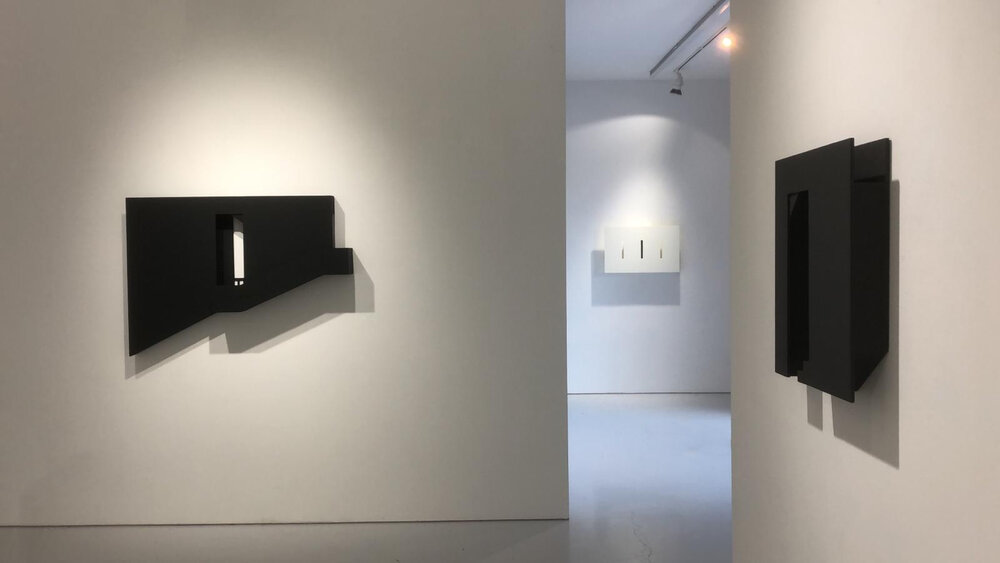
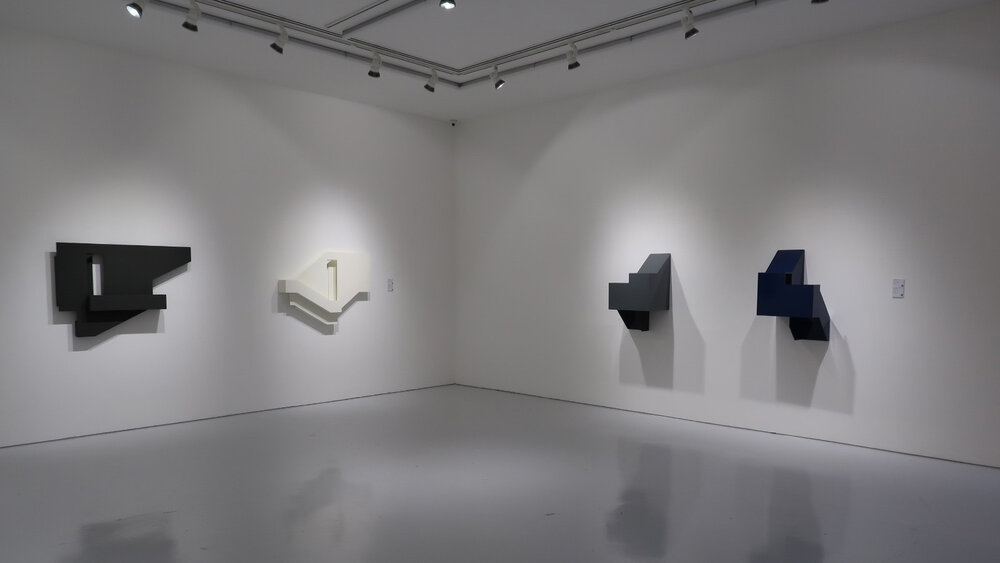
This resistance is something that can be seen particularly with your sculptural installations. They only open up to viewers when they walk around it, look into it or peek around the side of it. Your works are difficult to photograph and hard to negotiate. As a maker, you often create from a particular perspective. Creating a work that rejects that and denies that easy negotiation is not always a natural thing to do. Where does this impulse come from?
When you’re gallery represented, photographs often need to be taken of your works. The galleries will then send these photographs out to clients or potential buyers. These are busy people who often do not have time to come down to the gallery to see the works for themselves. It’s difficult to understand, and hard to explain this to people as well. I’ve been asked so many times before — why create works like this? But I think this element is crucial to my works.
My works do not just represent physical spaces, because I could have done so in a two-dimensional manner. My work is about how we negotiate the spaces around us, and so this is about bringing that inconvenience into the work itself. What you see in the gallery space is not just an artwork. It is a reenactment of that of the inconvenience, or even that joy discovery that comes with finding a corner of your own. There are all these different emotions attached to to us navigating these spaces in real life. I wanted to translate a portion of that experience or that emotion within the work, and bring that into the context of a gallery.
I think this idea of being awkward to negotiate, or having difficulties seeing the work due to space constraints, or even parts that are simply hidden — all of this is really crucial.
My works do not just represent physical spaces, because I could have done so in a two-dimensional manner. My work is about how we negotiate the spaces around us, and so this is about bringing that inconvenience into the work itself. What you see in the gallery space is not just an artwork. It is a reenactment of that of the inconvenience, or even that joy discovery that comes with finding a corner of your own. There are all these different emotions attached to to us navigating these spaces in real life. I wanted to translate a portion of that experience or that emotion within the work, and bring that into the context of a gallery.

⁴ Double Black and White, 2, Fernanda Fragateiro
2017
One of the works you picked out for our conversation, Fernanda Fragateiro’s Double Black and White, 2, resonates clearly with the sort of thematics you were speaking to in your answer. Her works are often modular in form, and they are often interventions into the spaces she exhibits in. Would you describe your own works in terms of architectural language or sculptural language? This is not to say that the two are different, but they give a very different flavour to approaching a work.
I really like the phrase “modular units”. A friend once described my work as “fancy dollhouses”, so “modular units” are definitely a fancier way to talk about them. It’s not wrong to refer to my works as modular units, because they do look like that. Having said that, it's also wrong to refer to them as modular units, because these works are very different. When you approach that term with an architectural intention or sensibility, the idea is very different from what I end up achieving with my works. It activates a certain kind of idea, or a certain kind of emotion. Although my works share a lot of affinities with architectural models, they are very different from them as well.
When we met for coffee before doing this interview, you mentioned taking on to role of an observer and spectator when you encounter a space. When you walk into a space, what are you looking out for and what catches your eye?
What I’m looking out for are unusual bends and curves. What I find really interesting is that these elements only appear to those who are actively seeking them out, and they are completely invisible to those who do not.
⁵ Quiet Intimacy (Moon Mist), Faris Nakamura
2018
2018

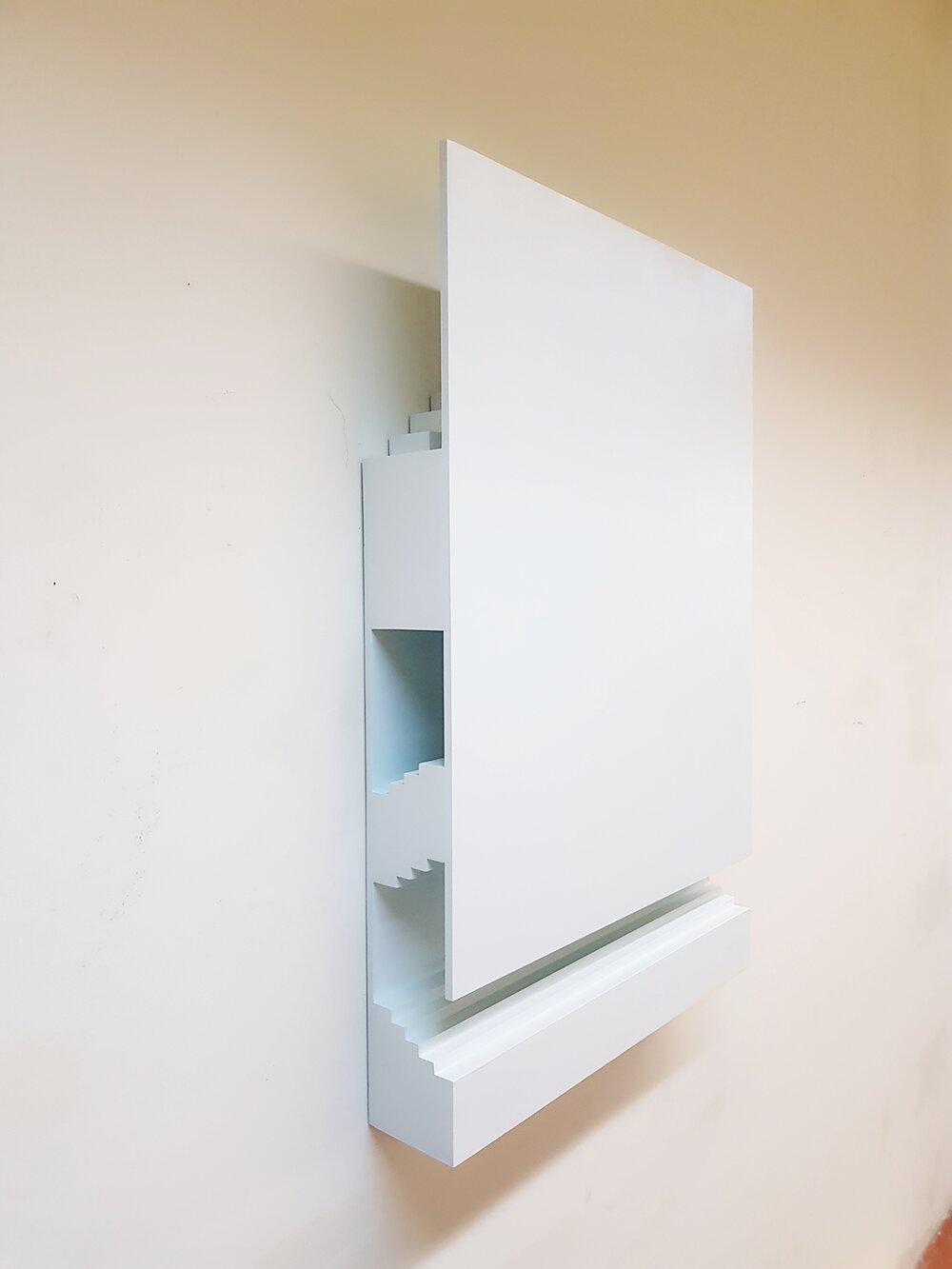
Terms like “observer” and “spectator” are roles that are rather active and exploratory. Having said that, there are spaces that do not allow for individuals to take on such active roles. There are spaces that completely strip certain people of their autonomy and agency, and you reference such spaces in your work too. How does this fit into or influence how you approach or navigate certain spaces?
There are these space I call “white spaces”. They are very passive spaces, because they are in between spaces that have no specific function. They will always be passive until someone or a community comes along to activate it. That is something I really like about architecture. We think that buildings are always functional, and that they serve a particular purpose. However, you can always find white spaces hidden within these buildings. Sometimes, these spaces are left open intentionally. Other times, they are not. White spaces are somewhat passive, but they have so much potential. I'm really interested in spaces such as these.
Personally, I think that we shouldn’t look at spaces for what they are. We should look at them for what they could possibly be.
For many who encounter your works, a natural question that comes to mind is — why create sculptural installations that viewers cannot inhabit? Could you describe some of the interactive installation works that have allowed for that experience of walking through these ideas?
I've done these larger installations on two occasions. The first installation was a work I created for the Kobe Biennale in 2015. That was the first time I blew up my work into a life-sized sculptural installation that people could weave through. The work also negotiates with the space around it as well. With the work in place, visitors who were familiar with the setting soon realised that they could no longer navigate around it as easily as they did before. It was really interesting for me to observe how visitors interacted with the work. There were some who hated the fact that the installation got in the way of their day to day activities. On the other hand, there are those who enjoyed the artwork immensely as well.
The second installation I did was at The Substation in 2018. That was really nice as well. I created this entire false staircase, complete with a tiny crevice underneath. I had pipes installed and I had photographs installed as well to show that this crevice exists everywhere. It is so vacant, and it doesn’t serve any particular purpose. I used to sit in those spaces, studying with a torch light, because I didn't have my own room. There's just so much potential in such space. The sad thing with this was that I remember people walking by, noticing me sitting in this crevice and telling me that I couldn’t be there. There were security guards who would say the same thing. Without being difficult or being a rebel, I’d just ask why not. The space is empty. It is not a storage space, and there’s absolutely nothing in it. I'm sitting here doing my homework. Even with that, they would still say that I couldn’t be there. As much as we talk about passive spaces, spaces that could be anything you want it to be, there are specific state rules and regulations that we have here in Singapore that prevent people from activating spaces as well.
⁶ The Light Between Walls, Faris Nakamura
2018, Installation View at ION Art
2018, Installation View at ION Art

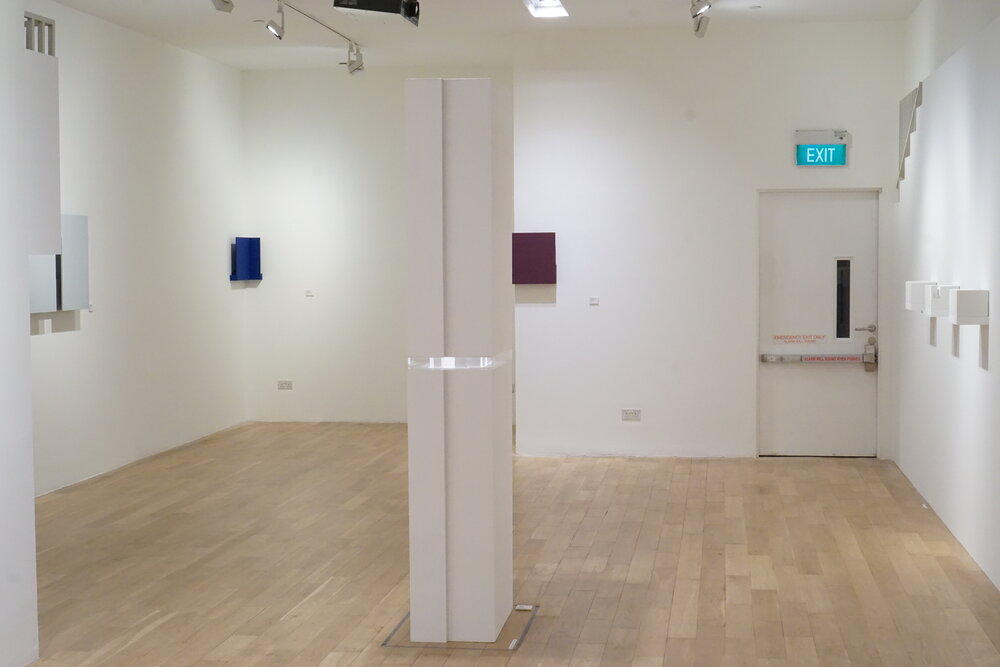
In recent years, we’ve seen how communities have reinvigorated or reinvented spaces that might have otherwise been considered passive. This is something that some artists are been beginning to kind of touch or comment on. As space is something that interests you, but is a notion that is constantly expanding, do you foresee these narratives coming into your practice in the future? If so, it seems to me as if that sort of exploration would take your practice down a slightly different route, not just in terms of philosophy but also in terms of aesthetic.
With where I’m at with my works, and with the condition of how I’m working right now, I think I’m leaning towards creating works that point towards the communities that are being silenced. My works touch on the struggles of these communities, and that is why they are installed in a way that is awkward to negotiate.
Looking into the future, and into the far future, I hope we get to a place where we are more accepting of different minorities — be they migrant workers, the LGBTQ community or domestic helpers. If and when we get to a place where we are completely accepting of these communities, I believe that my works would naturally change in response to that. I think that'll be really interesting. This was something that happened to me before with, for example, my use of colours.
My practice is always a reflection of the condition that we are in.
Early on in your practice, we saw you use polychromatic colours and particularly in your paintings. In recent years, we've seen that give way to a more monochromatic palette. Personally, how do you grapple with the role of colour in your practice? What role does it serve, or what role does it not serve?
I have this tendency to use the colours I see around me. You’re right to say that my works used to be more polychromatic, and that they’ve now become more monochromatic in tone. That’s really because these are the colours I’m seeing around me today, and I think this really raises interesting questions about the use of colours in architecture as well. Why were there such vibrant colours used for buildings such as the Rochor Centre? With newer developments, we see that colours such as white, black and grey dominate. To me, it looks very clinical and sterile.
I was doing my own research into colours, and as we all know, certain colours are associated to certain emotions. There is a functionality to using particular colours, and this extends to architecture as well. Prisons, for example, use a very specific colour of paint for their walls. The walls of prisons are painted this mild mint green shade, because it is a colour that does not encourage extreme emotions. It doesn’t encourage extreme unhappiness, but it also does not encourage extreme happiness. I found that information really interesting. If that is truly the reason why a pale green is used to paint prison interiors, then we have to ask ourselves why our public housing flats are painted in these various shades of grey.
I was doing my own research into colours, and as we all know, certain colours are associated to certain emotions. There is a functionality to using particular colours, and this extends to architecture as well. Prisons, for example, use a very specific colour of paint for their walls. The walls of prisons are painted this mild mint green shade, because it is a colour that does not encourage extreme emotions. It doesn’t encourage extreme unhappiness, but it also does not encourage extreme happiness. I found that information really interesting. If that is truly the reason why a pale green is used to paint prison interiors, then we have to ask ourselves why our public housing flats are painted in these various shades of grey.
This standardisation of colour can also be seen with larger developments, such as shopping malls. In some way, that has created a strangely monolithic architectural landscape for us here in Singapore. Having said that, the urban environment in Singapore is still described as fast changing. We’re pulling things down very quickly, and putting things up very quickly as well — even if all of these buildings look the same. Given that change is the only constant, do you see your works as responding to these changes or speculating on a possible future?
Right now, most of my works are a form of architectural documentation. We’ve lost a lot of architectural icons along the way as well, and in a way, I do feel like it’s my role to record and note this all down.
When it comes to speculating on the future, I’ve done so in a rather cheeky manner. This is obviously not to the full extent of creating a speculative body of work. I feel like my position as an artist now is to document the changing architectural landscape of Singapore. I’ll need to have more fun with actually speculating the future, but I think I’m in a good place in my practice right now.
When it comes to speculating on the future, I’ve done so in a rather cheeky manner. This is obviously not to the full extent of creating a speculative body of work. I feel like my position as an artist now is to document the changing architectural landscape of Singapore. I’ll need to have more fun with actually speculating the future, but I think I’m in a good place in my practice right now.
⁷ Quiet Intimacy (Willow Mist), Faris Nakamura
2018
2018
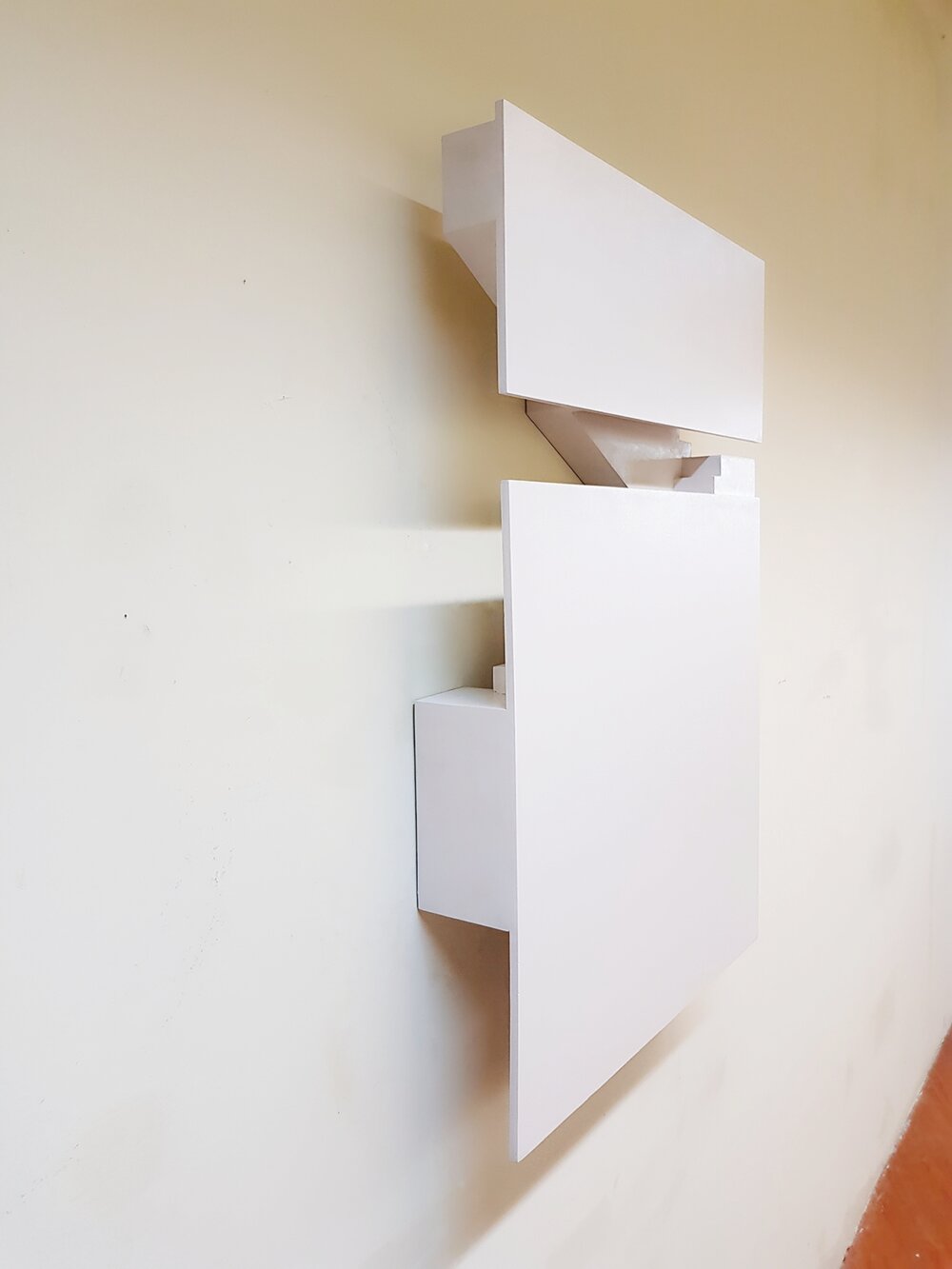
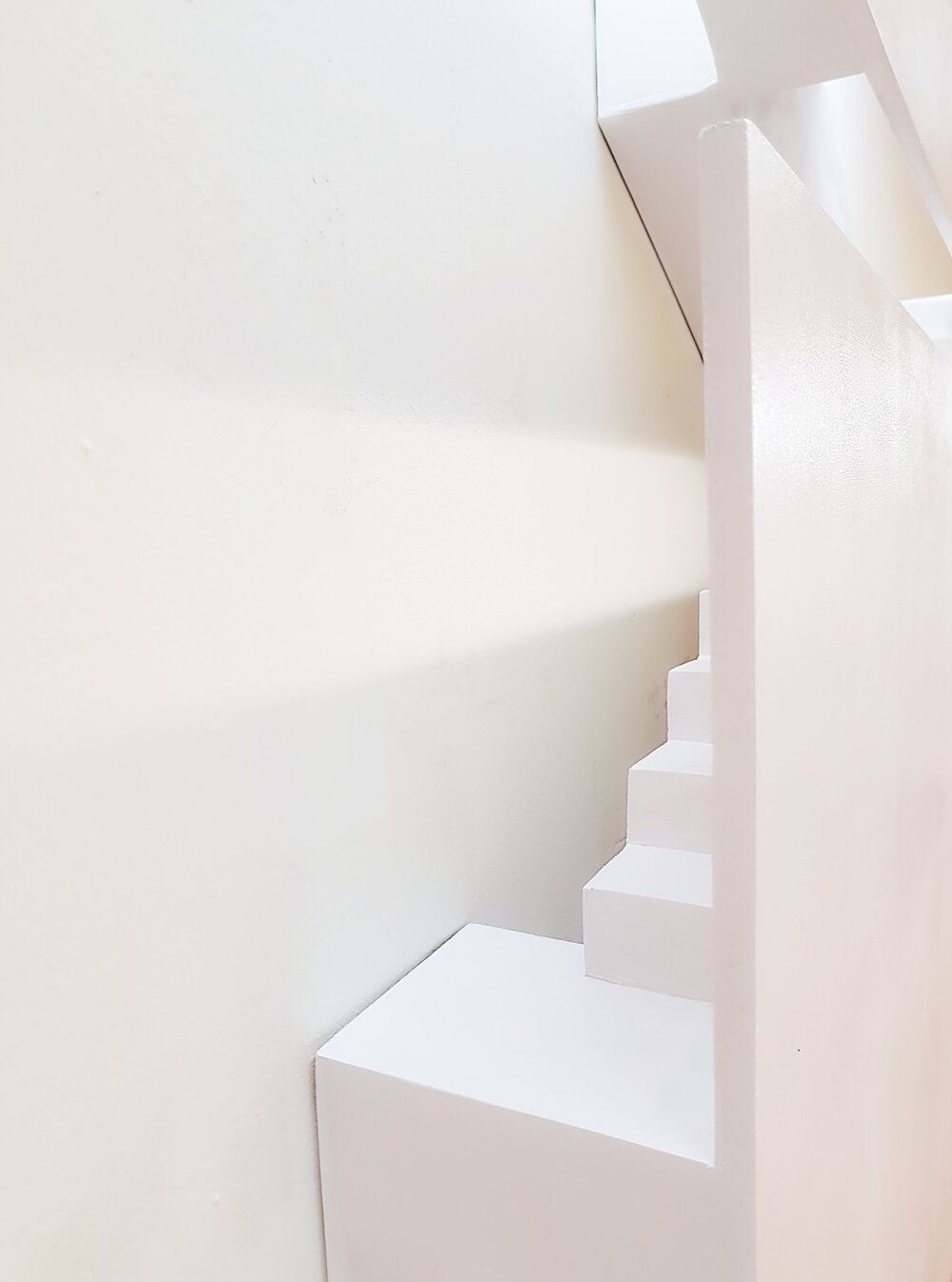
In the process of you pursuing this work, I’m sure you’ve been involved in multiple conversations with architects, architectural designers and urban planners. As an artist, how have these conversations influenced the way in which you approach these spaces?
This is really interesting, because I have met multiple architects when they come to my shows. I go into these conversations thinking that I will learn so much from them, because I'm the one without any knowledge of architecture — but it's actually the other way around. Architects have told me that they learned so much from an artist that engages with architecture. When they look at my works, it is very clear that they are very different from what they understand architecture to be.
These conversations have given me confidence that architects see my works as having on a purpose and that they touching on topics that architects are unable to. Obviously, architects do really important work themselves. Perhaps the negotiating of space or even this idea of white space is something they don't even think about. During these conversations, I often find that they don’t have the answers to all of my questions — and they find this very interesting too.
This cross disciplinary approach is also evident in your choice of Anthony Poon’s painting, P7-G-B on 4P Waves. The work itself was inspired by the idea of sound waves. As a trained flautist yourself, how do you think your interest in music feeds into how you approach the visual arts and vice versa?
Maybe I'll talk about this on a personal level first. People do visit me in my studio sometimes, and when they come in, they realise something that is quite different from the other studios they’ve visited. I play no music in my studio. For a musician to play no music in his studio is really interesting. I’ve been in studios where they have music playing, and it always creates very a lively and fun atmosphere. But I don’t work that way, and that’s because I constantly have music in my head. I don’t walk around with headphones plugged in as well, because that will clash with the music in my head.
This music is especially present when I create my works. Though it is not a physical or tangible thing, this music has helped me to compose all of my works. Sometimes, this music is accompanied by the tools that I use in making my works as well. I use tools such as the blower, the sander and the cutter; and all of these tools have specific sounds, rhythms and tempos to them. Music is really important to my process. It is something that is really personal. Sometimes I imagine people hearing this music when they see my works hanging on the gallery walls as well. People can refer to this as the aura or the energy of an artwork, but to me, it is just music.
⁸ P7-G-B on 4P Waves, Anthony Poon
Singapore Art Museum, 1991
Singapore Art Museum, 1991

If you could paint yourself an ideal situation, in your opinion, what would the ideal viewing setting for your works be? In the spirit of interdisciplinary pursuits, what sort of expertise or profession would you most like to collaborate with?
I feel like this has to happen sooner or later, but I’d like for my works to have an element of sound to them. I just have to figure it out. Given that I’m a musician myself, this is completely inevitable.
With regard to collaborations, I’d love to collaborate with other musicians. As a musician myself, I think this is the sort of collaboration that would excite me most. My elder brother is an accomplished musician as well, and we’ve always talked about doing something together. We’re putting together something that will hopefully come to fruition next year, and I really hope that happens because that will bring a very different perspective to both my works and his compositions.
